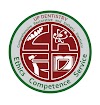UPCD-TOPP
The UPCD-TOPP (Temporomandibular Disorders and Orofacial Pain Program) is the first university-based training program in the TMD and Orofacial Pain in the Philippines, conducted in partnership with the Orofacial Pain Association (Philippines) Incorporated (OPAP) and the UP College of Dentistry. OPAP’s thrust is to deepen and advance professional education in the management of TMD and Orofacial pain conditions, among dental and non-dental practitioners, by holding scientific symposiums, journal clubs as well as conducting this university-based continuing education program. Prior to the program, most TMD/Orofacial pain practitioners were found to have had no formal training outside of what was taught to them in Dental School. The UPCD-TOPP program was conceptualized to bridge this gap by providing clinicians with up-to-date information in TMD and orofacial pain practice, in order to prevent haphazard treatment or mismanagement in the private clinical setting.
The 5-month program is held weekly, every Wednesday, for a total of 22 meetings. The morning sessions are devoted to didactic lectures aimed to develop a scientifically supported knowledge-based understanding of the diagnosis and management of pain and dysfunction of the masticatory system and related facial structures. These are then followed by cadaver dissections which are focused on the temporomandibular joint and the surrounding oral structures. These sessions are conducted in the Anatomy Laboratory of UP College of Medicine. Afternoon sessions are devoted for clinical training in UP College of Dentistry clinics. Program participants will treat patients identified as suffering from temporomandibular disorders and orofacial pain.
A module-type certificate course was also developed by the organizers, and this has been successfully conducted in several locations outside Metro Manila like Isabela and Cebu. The UPCD-TOPP has completed 8 batches since 2016, and over 170 dentists have completed and graduated from the program.
The objectives of the program: Upon completion of the course, the student should be able to:
1. Explain the principal epidemiologic characteristics of TMD and Orofacial Pain and correlate these to clinical signs and symptoms
2. Explain the basic mechanisms of normal and pathologic processes involving pain and dysfunction in the craniofacial area, acquire relevant data from performing clinical examinations and clinically manage these patients
3. Appraise the relationship of TMD and Orofacial pain with other dental health sciences
4. Demonstrate an empathetic understanding of the problems and special needs of patients suffering from TMD and/or orofacial pain
5. Evaluate treatment and management outcomes in the care of patients suffering from TMD and Orofacial Pain









